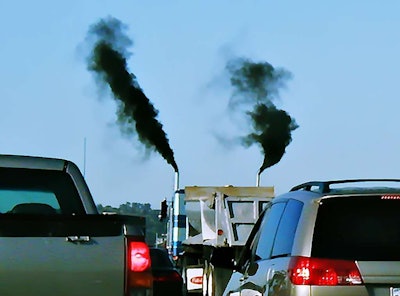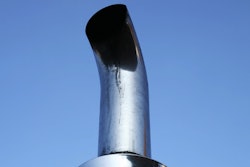
Even though the rule – commonly referred to as Phase 2 – was mostly expected, it doesn’t make the regulatory pill any easier to swallow for drivers and fleets already on the hook for implementing electronic stability control and electronic logs, while speed limiters await them on the horizon.
The 1,690 page document is an imposing read, but the rule requires a reduction of up to 25 percent in carbon emissions from tractor-trailers over the next decade. For diesel tractor engines, the EPA and NHTSA are adopting standards for MY 2027 that are more stringent than the preferred alternative from the original proposal, and will require reductions in CO2 emissions and fuel consumption that are 5.1 percent better than the 2017 baseline for tractor engine.
Just how all this is going to happen remains to be seen. The resurgence of waste heat recovery is certainly on deck as are refinements in turbo compounding and other less obvious things that I’m not smart enough to guess right now.
Phase 2 is going to tax the imaginations of engine builders nationwide, but truck OEMs almost universally praised its adoption.
To meet emissions standards for model year 2017, the final year of Phase 1, you’ve already seen many truck OEMs implement new ingenuities.
From redesigned pistons, to turbo compounding and one-box after-treatment systems, rabbits are already out of the hat.
According to the non-profit Diesel Technology Forum, 42 percent of all commercial trucks in use today in the U.S. already achieve near-zero particulate emissions with 2007 and newer diesel technology engines. Of those trucks, 26 percent have 2011 generation or newer clean diesel technology that also achieve near zero emissions of nitrogen oxides.
Diesel Technology Forum Executive Director Allen Schaeffer says the agency’s most recent research shows the 4.2 million new clean diesel commercial trucks put in service from 2007 through 2015 have saved nearly three billion gallons of diesel fuel and delivered emissions reductions equivalent to removing the CO2 emissions from 6.1 million light-duty vehicles from the road for one year, and NOx emissions from all light-duty vehicles for two years.
Phase 2 ramps that up with expectations to lower CO2 emissions by approximately 1.1 billion metric tons while reducing oil consumption by up to 2 billion barrels over the lifetime of the vehicles sold under the program.
The obvious question here is, “how much will all this cost?”
Most of the estimates I’ve seen say a model year 2021 unit will cost about $6,000 more than a comparable pre-Phase 2 unit. By 2027, that premium could balloon to more than $12,000. In 2027, additional efficiencies on trailers are expected to push their cost upwards of $1,100.
U.S. Transportation Secretary Anthony Foxx says the Phase 2 initiative could save vehicle owners about $170 billion in fuel costs, and the payback to truck and trailer owners for this technology will be about two years. Bare in mind that is a payback for the premium of added efficiency.
How much it will cost is one of Phase 2’s many legitimate questions, as is “how clean is clean enough?”
Schaeffer says it would take more than 60 of today’s generation clean diesel trucks to equal the emissions from a single truck built before 1990. In Southern California, he adds, more fine particles now come from brake dust and tire wear than from heavy-duty diesel trucks.
As a result of the clean diesel movement over the past decade, emissions from heavy-duty diesel trucks and buses have been reduced by 98 percent for nitrogen oxides – an ozone precursor – and 98 percent for particulate emissions, according to Schaeffer.
That’s pretty clean, and we’re already headed toward an even cleaner horizon.












